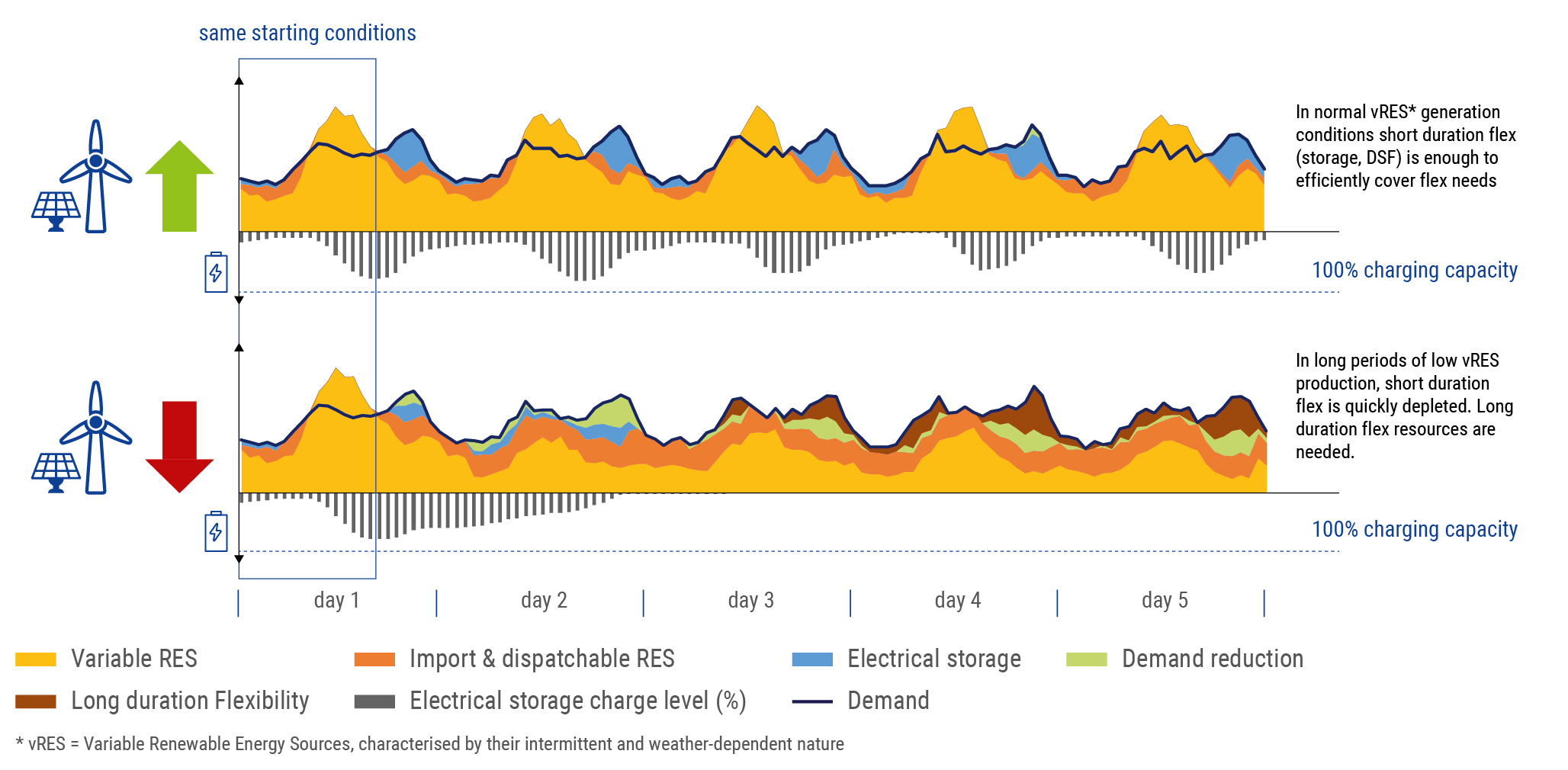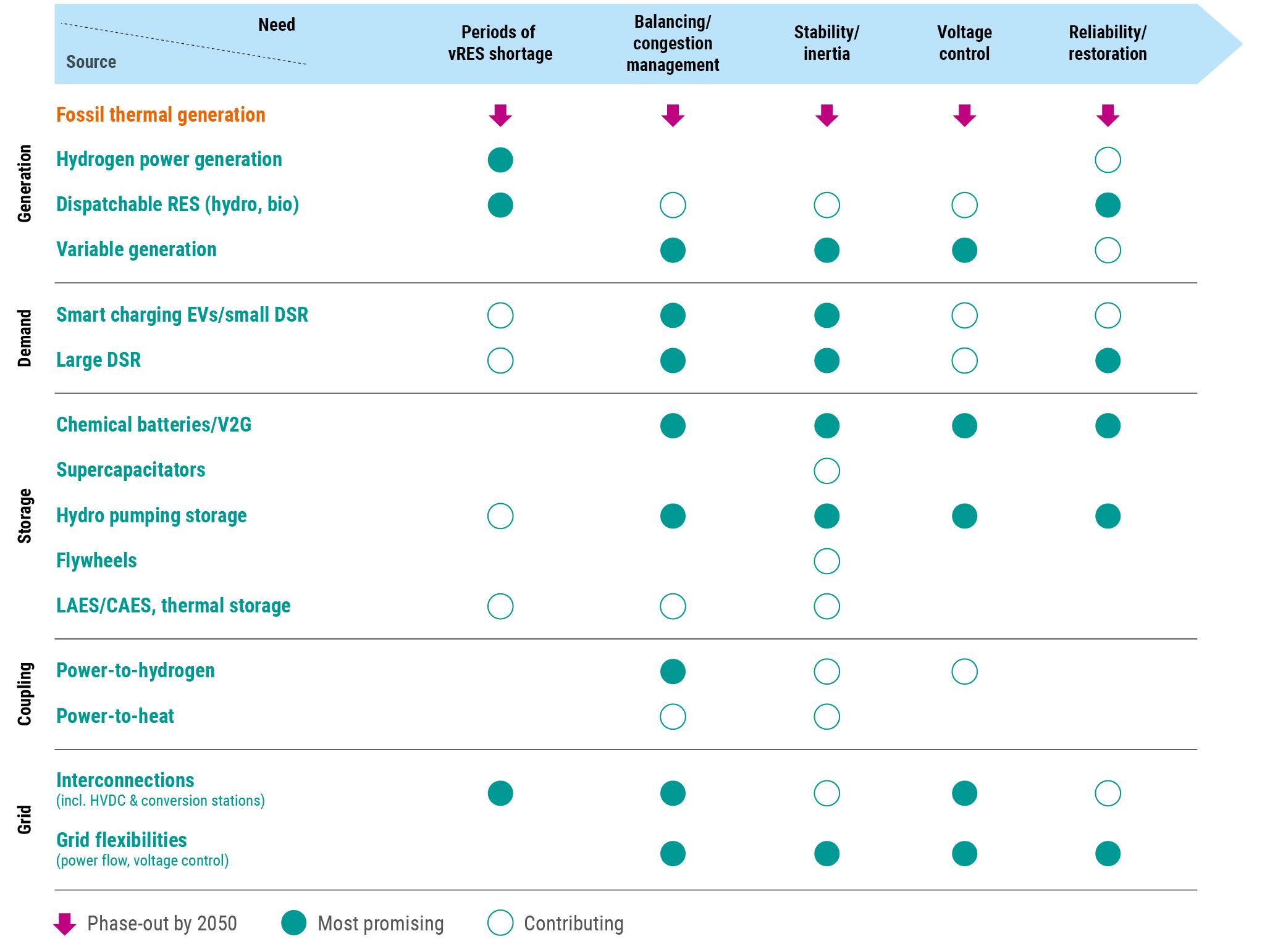Energy System Flexibility
A fully carbon neutral energy system, based on electrified consumption and on renewable electricity generation sources (mostly wind and sun), will become highly weather-dependent. To manage the resulting complexity and volatility of both generation and demand, while continuing to keep the power system within acceptable levels of adequacy and resilience, a significant amount of flexibility will be required.
Flexibility refers to the ability of the power system to cope with variability and uncertainty in demand, generation and grid availability.
Going towards carbon neutrality, the nature and volume of flexibility needs and the portfolio of flexibility resources will evolve. The power system will progressively stop relying on the fossil fuel dispatchable generation that provides a significant part of the flexibility and ancillary services today. The timely deployment of multiple resources of carbon neutral flexibility will be needed, including flexible generation, active demand, storage, sector integration and flexible grid use.
From a system point of view, flexibility needs can be structured under two main types, each requiring different flexibility resources:
- short duration flexibilities (from milliseconds up to a few hours, to balance the system within the day and ensure system stability),
- long duration flexibilities (up to several weeks, to compensate for long periods with shortage of wind, solar and hydro generation).
The need for both kinds of flexibility resources can be explained with the graphic below: short duration flexibility resources are efficient and can provide significant amounts of power, but do not have enough energy stored to last several days, and will have to be complemented by high energy-density resources.

In this context the electricity network will play a key role in enabling the exchange of both energy and flexibility resources within the full European “System of Systems”, thus reducing the overall amount of flexibility requirements to be covered.
The most suitable flexibility resources to cover a specific need will compete mostly based on market-based mechanisms to provide the related services. The figure below gives a qualitative indication of such suitability, also indicating the current most promising sources for wider diffusion in the coming years and those whose diffusion will be most likely dependent on future technological improvements or only partially contributing to covering a certain need.
- Demand Side resources and electrical storage in particular have good potential to become significant providers of carbon neutral short duration flexibility. This include for instance active consumers (where the demand adapts to the generation) and vehicle-to-grid solutions, for which cooperation between TSOs and DSOs will be essential to unlock their potential.
- There are very few potential sources of large-scale carbon-neutral long duration flexibility, beyond dispatchable hydro electrical power generation for which further large-scale development would be difficult in most of Europe.
The most promising solution could be hydrogen – produced from carbon neutral generation, stored, and subsequently used for power generation when the system requires it. Other alternatives could emerge assuming that further technological progress is made to decrease their cost and improve their capacity to store energy.
It is likely that the evolution of flexibility resources and needs will differ significantly across Europe, based on geography, local characteristics and policies. In particular, a number of European countries foresee also nuclear power generation as a non-renewable but carbon-free source of energy, and its inclusion in the mix will partially decrease the need for flexibility.
To enable a secure transition towards carbon neutrality the deployment of both short and long duration flexibility resources will need to be coordinated with the integration of weather-dependent renewable generation sources and the phase-out of fossil-fuel generation. These resources will be located at transmission and distribution, onshore and offshore, and in other energy sectors. The future energy landscape in Europe will clearly be a System of interdependent Systems.

